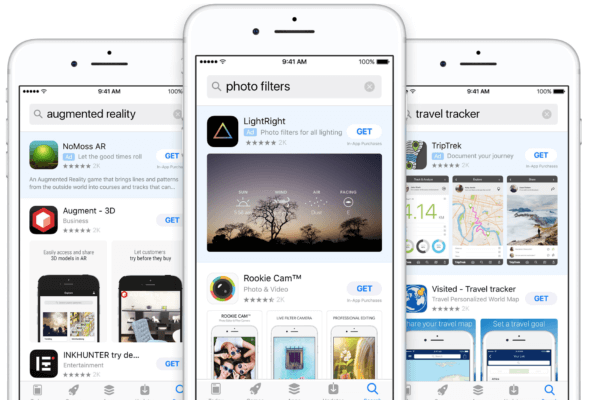Apple search ads expected to generate $2 billion in revenue by 2020
The ad units are on track to bring in $500 million by the end of this year, according to an industry analyst.
Apple search ads are likely to generate $2 billion in revenue for the company in 2020, reports Apple Insider. Based on information seen by a Bernstein research analyst, the report says Apple’s search ads are expected to bring in $500 million this year, with revenues quadrupling in the next two years.
Why app marketers should care
Apple search ads for the App Store help drive app discovery and installs for app marketers, giving advertisers the ability to set daily or total campaign budgets based on keyword search terms. Since launching the ad units in the U.S. in September 2016, Apple has yet to release any numbers specifying its search ad revenue. This estimate that Apple’s search ads may deliver as much as $2 billion annually two years from now is proof that more and more app marketers are making the ad units part of their search strategies.
Apple Insider said the 2020 Apple search ad revenue forecast is based on a note seen by an analyst at Bernstein, and indicated that it is a “conservative” estimate.
“Should the goals be reached, Search Ads alone will generate as much revenue as Apple Music did in fiscal year 2017, but given that it has to pay almost nothing for acquisition costs, the margins are dramatically higher,” reports Apple Insider. The same analyst said Apple’s search ad business is expected to reach $500 million by the end of this year.
Last year, the company extended search ads to Canada, Mexico and Switzerland, and launched a “Basic” version of the ads that eliminated keywords and bidding.
More on Apple Search Ads
- Apple search ads are created automatically using images and copy found within the metadata supplied by the app publisher or developer.
- Advertisers can separate search ad bids by device, creating separate campaigns for ads to appear on iPhones or iPads.
- Apple provides advertisers with a keyword suggestion tool, popularity indicators and negative keyword capabilities. Targeting features also include customer type, gender, age and location.
Contributing authors are invited to create content for Search Engine Land and are chosen for their expertise and contribution to the search community. Our contributors work under the oversight of the editorial staff and contributions are checked for quality and relevance to our readers. Search Engine Land is owned by Semrush. Contributor was not asked to make any direct or indirect mentions of Semrush. The opinions they express are their own.



